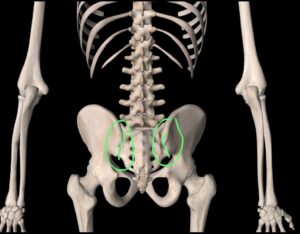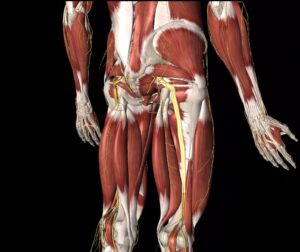Sciatica Symptoms: Understanding Causes and Relief Options

What is Sciatica?
Sciatica is a term often thrown around to describe pain that radiates down the leg. While it’s commonly referred to as a condition, it’s important to understand that *sciatica is actually a symptom* of an underlying issue. Everyone has a sciatic nerve—it’s the largest nerve in the body, running from the lower back down to each leg. But not everyone experiences sciatic pain, and when it does occur, the causes can vary widely.
What Causes Sciatica?
Sciatica occurs when the sciatic nerve is irritated or compressed. This irritation can result from various factors, such as a herniated disc, spinal stenosis, or even muscular tension. One common and often overlooked cause is a tight muscle that reacts to an inflamed joint. This reactive tightening can lead to irritation in and around the sciatic nerve, causing the familiar pain that shoots down the leg.

Causes of Sciatica
Signs and Symptoms of Sciatica
– Pain radiating from the lower back down the leg
– Numbness or tingling in the leg or foot
– Weakness in the affected leg
– Discomfort that worsens with prolonged sitting or standing

Pain down the leg
Is It Always Serious?
Not necessarily. While sciatica can sometimes indicate a more serious issue, many cases are related to temporary muscle and joint irritation. That said, it’s crucial to address the root cause to prevent chronic pain or further complications.
What Can You Do About It?
Treatment for sciatica depends on the underlying cause. In many cases, addressing joint inflammation and relaxing tight muscles can significantly reduce symptoms. Chiropractic care, physical therapy, and targeted exercises are often effective in managing this type of pain. However, a proper diagnosis is essential before starting any treatment plan.
A Quick Note on Self-Diagnosis
While this explanation highlights one possible cause of sciatica, it’s not exhaustive. There are numerous potential reasons for sciatic pain, ranging from simple muscle tightness to more complex spinal issues. This is why consulting a healthcare professional is always recommended.
Disclaimer
This article is for educational purposes only and is not intended as medical advice. It does not replace a professional diagnosis or consultation. If you’re experiencing persistent leg pain or suspect sciatica, consult a qualified healthcare provider to determine the best course of action.
Final Thoughts
Understanding sciatica as a symptom rather than a condition is key to finding effective relief. While it’s common to assume the worst, many cases are simpler than they seem. By addressing joint inflammation and muscle tension, you can often reduce or eliminate sciatic pain. Remember, your body is unique, and what works for one person may not work for another. Seek guidance from a professional to get to the root of your pain and move toward recovery.